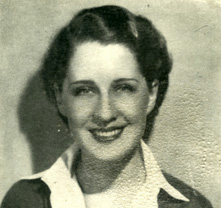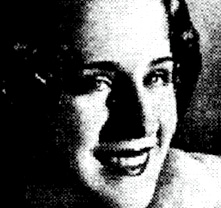Norma Shearer (1902-1943)
-

Norma Shearer, postcard.
Source : Collection Pierre Pageau
-

Le Petit Journal, 3 January 1943, p.43.
Source : Bibliothèque et Archives nationale du Québec
-

Colour photographic portrait of Norma Shearer, with a dedication.
Source : Collection Pierre Pageau
Norma Shearer was born in 1902 in the wealthy city of Westmount, a suburb of Montreal. She grew up alongside a sister, Athole, and a brother, Douglas, who also ended up in Hollywood. As a child, Norma studied the piano and practised various sports.
In 1919, her mother divorced and took her to New York to work on Broadway. Shearer had no success on stage, but was able to launch a film career by acting as an extra in several films. In 1922, she landed a role in a film shot in New Brunswick called Blue Water. Produced by Ernest Shipman, the film was a crushing commercial failure. Shearer’s breakthrough came a year later when the producer Irving Thalberg hired her for the new studio Metro-Goldwyn-Mayer. Shearer didn’t just accept Thalberg’s offer: in 1927, when he was one of the most powerful men in Hollywood, she married him.
Shearer handled the transition to the talkies quite well. She drew particular attention for a series of bold roles in the years preceding the introduction of the Hays Code in 1934. Her role as an adulterous woman in The Divorcee (Robert Z. Leonard) won her an Oscar in 1930. Later she turned up in a series of prestigious productions such as Romeo and Juliet (George Cukor, 1939), Marie Antoinette (W.S. Van Dyke, 1938) and The Women (George Cukor, 1939). Norma Shearer had acted in more than 50 films when she retired in 1942.